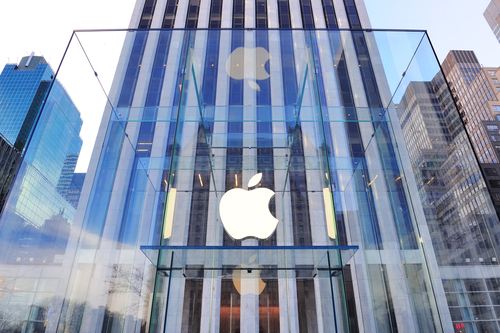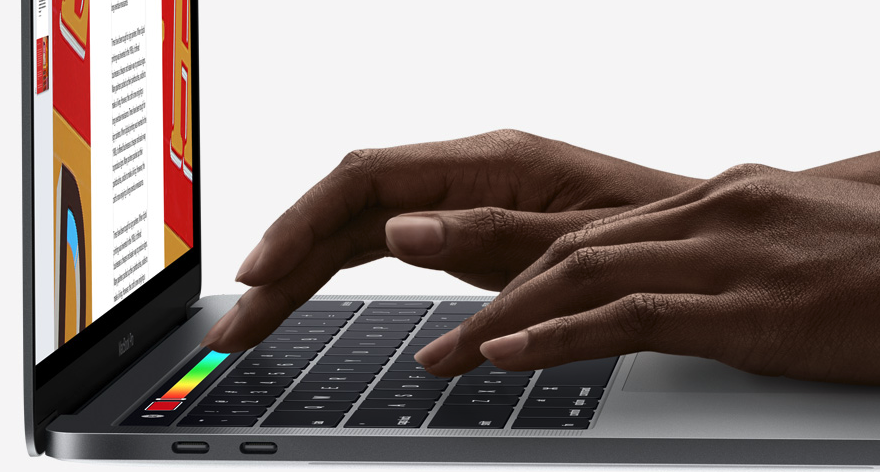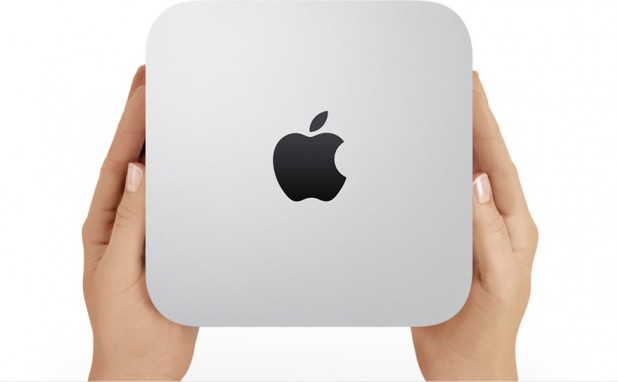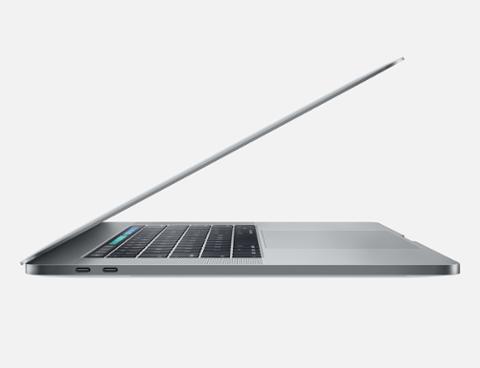[caption id="attachment_127158" align="aligncenter" width="500"]

Apple Store[/caption] Something has been stirring in the undertow of the developer and creative communities. It started when Apple left the Mac lineup on the vine too long, then
introduced a new MacBook Pro to a lukewarm reception. On top of that, the company's move away from automation and AirPort has us wondering: what’s Apple’s current message to professionals? A quick look through Mac Rumors’
buyers guide returns some mixed results on its own. The only ‘buy’ recommendation is for the new MacBook Pro. The 12-inch MacBook, which was refreshed earlier this year, gets a ‘neutral’ rating. Everything else – the Mac Pro, iMac, MacBook Air and Mac Mini – has a ‘do not buy’ tagged in bold red. It’s a euphemism more than a buyer’s guide at this point. While the Air is no ‘pro’ device, the rest of the hardware remains in heavy rotation among many companies and independent professionals. When the MacBook Pro was introduced last month, many saw the
Touch Bar as a kitsch add-in rather than a professional productivity tool. Away from that, those with more current machines saw little reason to be excited about upgrading. That being said, there is a lot to like about the newest MacBook Pros, such as the (misunderstood) Touch Bar or great P3 display; but when it comes to internal specs, the Pro is limited. That’s not Apple’s fault, per se; it can only give us what Intel provides, and most tests suggest forcing the chip-maker for new Kaby Lake processors, rather than last-generation silicon, wouldn’t have mattered much in terms of performance, anyway. Some professionals are also bemused by the 16GB RAM limit for new Pros. Others are put off that Apple hasn’t bothered with the rest of its lineup this year. The once top-end Mac Pro now sits in stores as practically a museum installment, and less a computer you’d be proud to have on your desk. [caption id="attachment_137961" align="aligncenter" width="880"]

MacBook Pro Touch Bar[/caption]
Apple and Pros: It Gets Worse
The computer hardware alone has many wringing their hands, but there are other issues at work. Apple has apparently jettisoned
Sal Soghoian, the person responsible for Mac automation products such as Automator and AppleScript. It’s not clear why (he says the company eliminated his position) but it’s a potentially troublesome move. Apple’s SVP of Software Engineering, Craig Federighi,
apparently told a user via email that the company will remain dedicated to supporting automation tools, but didn’t say how it planned to do so after eliminating the guy whose sole purpose was automation. At the same time, it seems the company is moving away from its router business. According to a new report from
Bloomberg, Apple has dismantled its AirPort division, moving engineers to other departments. Once considered by many to be best-in-class, the AirPort, like the Mac Pro, has not been touched in years. It’s an odd move if Apple is indeed killing off its router, which is built to seamlessly work with other Apple products. The Extreme also has internal memory for backing up MacBooks. No other equally integral solutions exist. It’s possible Apple will do for routers what it did with monitors. Earlier this year, Apple quietly discontinued the Thunderbolt display, replacing it with an updated LG-branded version during the MacBook Pro launch. Perhaps the company will simply partner with another to bring us a more vibrant version of the AirPort in the future; or at least we hope so, but such a development would be a little clumsy. Everything about automation and routers aside, App Stores stand alone for most pros as the central point of contention and confusion with the company. The extreme level of iOS security makes selling via the iOS App Store a necessity, but the Mac App store is different. It's still the best place to find apps, but many developers are instead choosing to market and sell their own apps independent of Apple. A few notables have distanced themselves from the App Store altogether.
Sketch, a popular design tool, is in the midst of an apparent pivot toward making its tool a platform; part of the effort involves ditching the Mac App Store, which the creators felt limited what they could offer customers. The ability to distribute and sell apps without Apple’s involvement also means developers can sidestep the 30 percent cut Apple takes. No sandboxing, no more reduced income. The problem here is that Apple treats the Mac App Store like the iOS App Store, and it’s not. The App Store is not even the best place for discovery; with tools like Product Hunt and social media, developers are finding it much easier to strike out on their own.

Mixed Message
Apple’s hardware, software and platforms are now being openly questioned en masse by professionals. More than at any other time in recent history, the company is under fire by many who feel it doesn’t have the interests of day-to-day professionals at heart. Naturally, Apple would dispute as much. Distilled, its argument is that the company is as committed to professionals today as it ever was, perhaps just in a different way. And that’s a fair position to take, mostly because it’s hard to nail down what a ‘professional’ is. While some see the move to USB-C in the new MacBook Pros as an assault on productivity, Apple could argue the opposite. Though USB-C adapters are fussy, they do make new devices more extensible; but such arguments may not be immediately clear to users. The P3 color gamut on all new Apple displays is also just plain nicer, though it’s hard to drive that point home unless you actually use one; it’s in that odd space between the obvious and the provable that we find ourselves. Some products don’t need to be branded with the Apple logo, either. Displays and routers are a competitive field, and profitability is tight. It’s probably best to let others worry about them. But when it comes to app distribution, professional tools and high-end hardware, Apple’s path forward is opaque to us. It’s a slippery slope to go from ‘buy everything we have for the best experience’ to encouraging users to shop around for devices produced by others. Shopping for new routers and displays, for example, may lead those customers to a Dell XPS instead of a new MacBook Pro. With Visual Studio making a play for developers and the impressive Surface Studio pinching some iMac energy, it’s a bad time for Apple to be tight-lipped about where it’s going with regard to professionals. Because now more than ever, we need to know what’s going on.
 Apple Store[/caption] Something has been stirring in the undertow of the developer and creative communities. It started when Apple left the Mac lineup on the vine too long, then introduced a new MacBook Pro to a lukewarm reception. On top of that, the company's move away from automation and AirPort has us wondering: what’s Apple’s current message to professionals? A quick look through Mac Rumors’ buyers guide returns some mixed results on its own. The only ‘buy’ recommendation is for the new MacBook Pro. The 12-inch MacBook, which was refreshed earlier this year, gets a ‘neutral’ rating. Everything else – the Mac Pro, iMac, MacBook Air and Mac Mini – has a ‘do not buy’ tagged in bold red. It’s a euphemism more than a buyer’s guide at this point. While the Air is no ‘pro’ device, the rest of the hardware remains in heavy rotation among many companies and independent professionals. When the MacBook Pro was introduced last month, many saw the Touch Bar as a kitsch add-in rather than a professional productivity tool. Away from that, those with more current machines saw little reason to be excited about upgrading. That being said, there is a lot to like about the newest MacBook Pros, such as the (misunderstood) Touch Bar or great P3 display; but when it comes to internal specs, the Pro is limited. That’s not Apple’s fault, per se; it can only give us what Intel provides, and most tests suggest forcing the chip-maker for new Kaby Lake processors, rather than last-generation silicon, wouldn’t have mattered much in terms of performance, anyway. Some professionals are also bemused by the 16GB RAM limit for new Pros. Others are put off that Apple hasn’t bothered with the rest of its lineup this year. The once top-end Mac Pro now sits in stores as practically a museum installment, and less a computer you’d be proud to have on your desk. [caption id="attachment_137961" align="aligncenter" width="880"]
Apple Store[/caption] Something has been stirring in the undertow of the developer and creative communities. It started when Apple left the Mac lineup on the vine too long, then introduced a new MacBook Pro to a lukewarm reception. On top of that, the company's move away from automation and AirPort has us wondering: what’s Apple’s current message to professionals? A quick look through Mac Rumors’ buyers guide returns some mixed results on its own. The only ‘buy’ recommendation is for the new MacBook Pro. The 12-inch MacBook, which was refreshed earlier this year, gets a ‘neutral’ rating. Everything else – the Mac Pro, iMac, MacBook Air and Mac Mini – has a ‘do not buy’ tagged in bold red. It’s a euphemism more than a buyer’s guide at this point. While the Air is no ‘pro’ device, the rest of the hardware remains in heavy rotation among many companies and independent professionals. When the MacBook Pro was introduced last month, many saw the Touch Bar as a kitsch add-in rather than a professional productivity tool. Away from that, those with more current machines saw little reason to be excited about upgrading. That being said, there is a lot to like about the newest MacBook Pros, such as the (misunderstood) Touch Bar or great P3 display; but when it comes to internal specs, the Pro is limited. That’s not Apple’s fault, per se; it can only give us what Intel provides, and most tests suggest forcing the chip-maker for new Kaby Lake processors, rather than last-generation silicon, wouldn’t have mattered much in terms of performance, anyway. Some professionals are also bemused by the 16GB RAM limit for new Pros. Others are put off that Apple hasn’t bothered with the rest of its lineup this year. The once top-end Mac Pro now sits in stores as practically a museum installment, and less a computer you’d be proud to have on your desk. [caption id="attachment_137961" align="aligncenter" width="880"]  MacBook Pro Touch Bar[/caption]
MacBook Pro Touch Bar[/caption]




